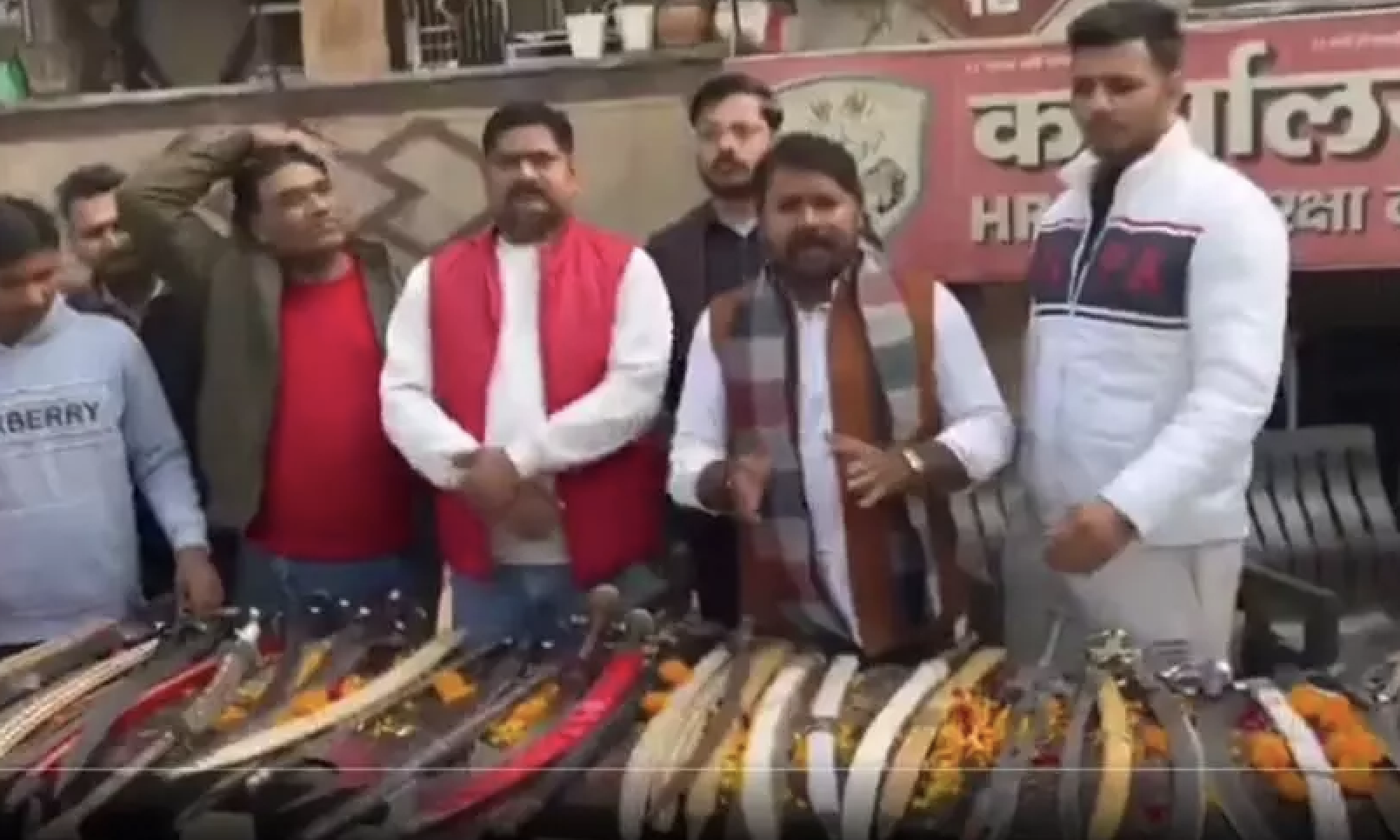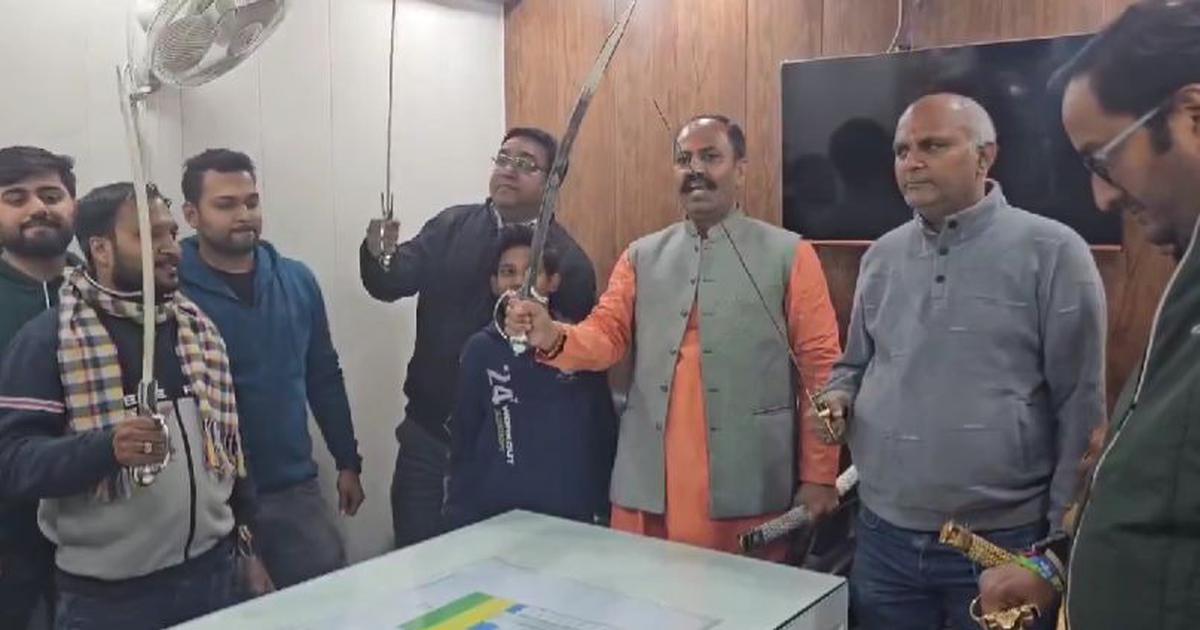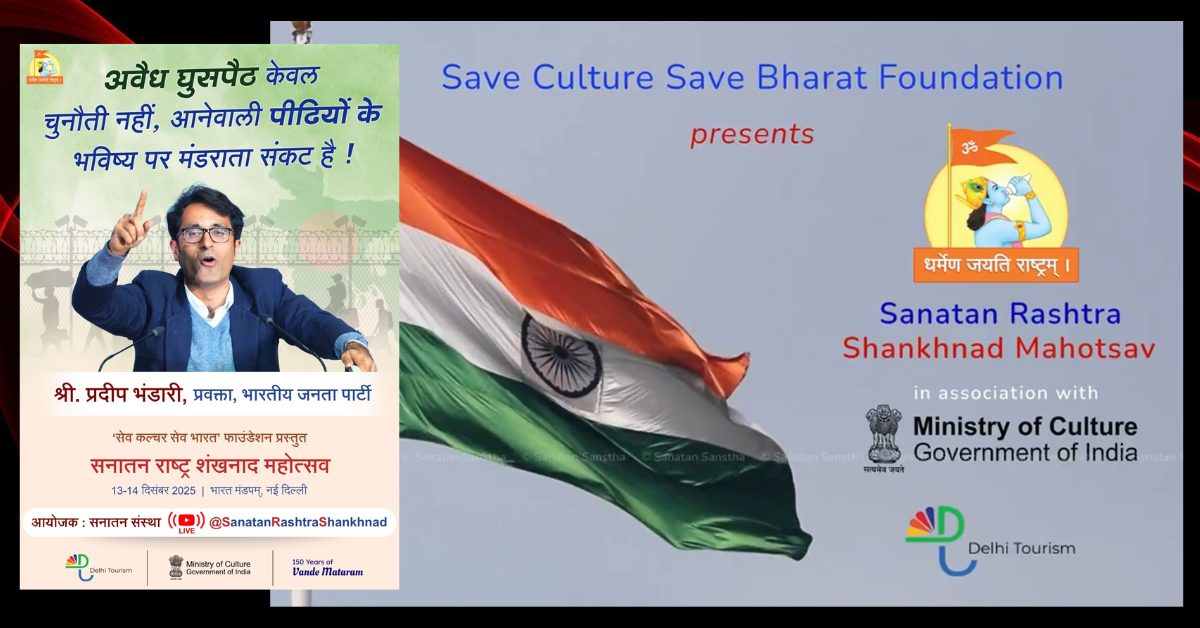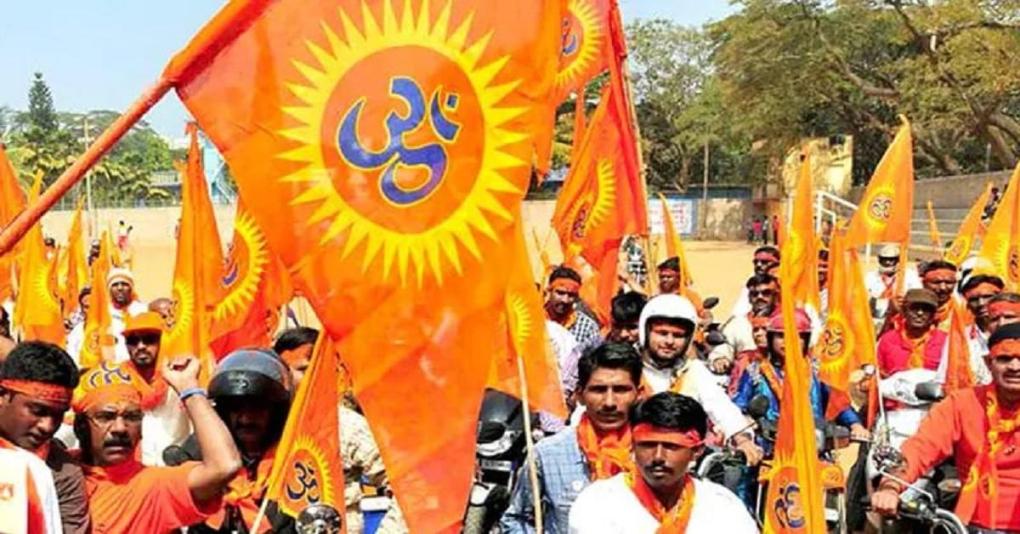Madhav Sadashiv Golwalkar’s We Or Our Nationhood Defined: A Review
On March 6th 1992, when hundreds of Kar Sevaks marched on the streets of Ayodhya to ‘avenge’ the injustices of their ancestors and to ‘reclaim’ the land of the controversial Babri Masjid, a 16th century mosque built by the first Mughal Emperor Babur on the alleged birthplace of Lord Rama (a mythical Hindu King), there was a political mobilization of what the Rashtriya Swayam Sevak Sangh (RSS) and other Hindu nationalist organisations had been trying to construct, albeit in a restricted geo-political sense limited to what is colloquially known as the cow belt of India, largely comprising of the Hindi speaking, Hindu majority states of Uttar Pradesh, Gujarat, Rajasthan, Haryana, Bihar, etc.
Cut to 2014, and consequently to 2017, after the thumping electoral victory of the Indian state of Uttar Pradesh, the very site of the mythical Ram Janmabhoomi, one can with a fair degree of certainty say that the Hindu nationalist movement and its political project of fashioning India into a Hindu Rashtra (a Hindu state) is well on its way.
So why did the Nehruvian consensus unravel so easily following the rise of ethno-nationalist movements in the late 1980s, and how did it so quickly marry with its ethnic majority assertion, a ubiquitous nationalism of sorts that isn’t just outward projecting against a perceived ‘other’, which in Indian Union’s case has been the constant threat of the neighboring country of Pakistan against which virtually all governments have fear-mongered, but also inward looking in so far as it sees the project of Indian nationalism as a struggle against certain ethnic communities within Indian Union’s territory?
One possible answer can be found in the proposition that challenge two very important public perceptions of the Hindu nationalist project—
- It is a theocratic project that aims to rebuild the state system of the Indian Union in the mold of a theocratic ‘Ramrajya’;
- It is a reactionary ideology activated by the wounds of the partition of the Indian Subcontinent on a communal logic at the heart of which lies the ‘Two-Nation” theory
While the latter is true only on a very superficial level since after Independence, the Hindu nationalist project in the Indian Union can be made sense of as a logical conclusion of the partition which had as its core a communal idea of nationhood, but any deeper reading of the genealogies of the Hindu nationalist movement would easily dispel this notion. Hindu nationalism is in fact a long project that had its intellectual and even organizational beginning in the colonial times, which articulated a well defined concept of nationhood which in its restricted sense is more coherent than any other political definitions of nationhood or a national community that is pan-Indian in its nature.
With respect to the first popular idea of Hindu nationalism and Ramrajya being parochially interpreted as a theocratic project of re-fashioning Indian State, it can only be stated that the idea of the Indian nationhood as an essentially Hindu nation and its nationhood defined in terms of a majority Hindu community, is not an attempt to create a theocratic state but a political project that is born out of modern times and borrows from the political context of a modern world with nation states as a fundamental unit of political organization. It is a project steeped in modernity and is not an attempt to recreate something that was lost a few millennia ago but a creation of something completely new that has never been done in the history of the subcontinent.
In this essay I will try and put those two points into perspective as I analyze one of the seminal texts of Hindu nationalism, written by M.S. Golwalkar, the second Sarsangchalak of the Rashtriya Swayamsevak Sangh. The book — “We and Our Nationhood Defined” — was first published in 1939 and since then has become one of the essential documents of the Sangh, which it uses extensively in its pedagogy through its numerous Shakhas all over the country. The book is not a very sound historical or academic work. It in fact uses questionable historiography; at the heart of the book, however, lays an idea that drives the core political project of the RSS and the Hindu nationalist movement in general. It is the idea that a nation transcends the boundaries of time and space.
“The life of Nations is not to be counted in years. What days are in the life of man, years or even centuries may be in that of Nations. Especially so is the case of the Nation of Hindusthan.” Golwalkar begins his book with these lines. At once, Golwalkar does away with the theoretical and historical task of interrogating the veracity of the existence of the Indian nation.
Whether a bunch of British occupied territory can at all be thought of as a nation that has always existed in space and time, albeit under political domination of those who do not belong to this nation, is something not only Golwalkar but also so called secular nationalist and orientalists before them accepted as an a priori fact. It is here that the coherence of the Hindu nationalist project can be seen in comparison to other secular or composite nationalist projects, which were also theorizing about the Indian nation at the same time.
If India is indeed a nation that goes back to ancient times, the only logical conclusion of that assumption is that the original inhabitants of the subcontinent or the “mool-nivasis” are the precedents of what today we call the Indian nation and therefore have some primacy over other communities that came to the subcontinent. In fact Ambedkar used a similar line of reasoning in his book, “Who are the Shudras?”, where he says that the so called lower-castes in the Hindu society are original inhabitants of the subcontinent and have been subjugated and dominated by the immigrants from central Asia called Aryans, and therefore have been wronged as sons of the soil who are now denied a status in the body politic of the very country that they are the original inhabitants of.
Golwalkar recognizes this problem inherent with identifying the so-called Hindus as basically Aryans which was by then a very popular racial idea that found its precedents in several Hindu revivalist movements such as that of the Arya Samaj by Dayanand Sarswati in the 19th century and was also propounded by orientalists of the 18th century like Max Mueller. Therefore Golwalkar goes to great lengths to prove that Aryans are original inhabitants of India which came to be interchangeably used in this historiography as Aryavarta (or the land of the Aryans), often resorting to pseudoscience by stating that the so-called Arctic home of the Aryans were actually modern-day Bihar or Orissa as the North Pole was around this region.
So one can see that once with a few foundational squabbles settled, one can fairly call the Indian nation a direct descendent of the Vedic culture, in so far as the idea of the Indian nation is seen as an extension of the regional idea of nationhood prevalent in the Indo-Gangetic valley. It is no surprise that this idea was so uniformly prevalent among all nationalist politicians and thinkers. After all the project of the Indian cultural nationalism begins with the intellectual writings of predominantly upper-caste Hindus like Bankim Chandra Chattopadhyay, Swami Vivekananda, Lokmanya Tilak, Gopal Krishna Gokhale and in the later stages even M. K. Gandhi, Madan Mohan Malviya etc.
In fact the major challenges of this idea of India can only be found in the southern peninsular region of India whose inhabitants speak a Dravidian language and whose political destiny was rarely ever controlled from the throne in Delhi. In fact Madras Presidency and Travancore were for the first time entwined in a single political rubric by the Imperial British throne. Those regions have had several centuries of independent political existence from the rest of the Indo-Gangetic Valley of the subcontinent, even their own foreign relations with South East Asian kingdoms.
So if a pan-India project of national community is to be imagined, the only ‘civilizational’ link that seems to have existed in popular historiography at that time and even in the political imaginations of politicians such as Subhas Bose and Jawaharlal Nehru (who by no stretch of imagination was a Hindu Nationalist), in their books “The Indian Struggle” and “The Discovery of India” respectively speaks of the civilizational character of the subcontinent such that among its diverse linguistic and religious communities lies a shared history of continuous political and cultural inheritance that is the so-called Indian civilization.
Golwalkar alludes to this albeit with his slight variation, instead using the term “Race Spirit”. An extreme and populist interpretation of the Indian civilization and its culture is easily essentialised into a Hindu spirit and Hindu culture which despite its tremendous diversity is linked to the core by a familiar story of Brahmanical dominance, a bunch of Sanskrit texts going back to the Vedic times and a pantheon of familiar gods and goddesses with minor regional variations.
And in this case Golwalkar is not really doing something innovative. He is in fact identifying an often unstated (in those specific communal terms) consensus among all politicians and intellectuals of cultural nationalism of that time, that from Lokmanya Tilak’s Shivaji Utsav and Ganesh Chaturthi to the identification of Bharat Mata in Bankim’s ode to the nation or Sri Aurobindo’s adulation of the nation as a goddess. The idea that to be patriotic one must sacrifice his life to the service of the Bharat Mata or the allusion of the goddess as Mother India can be found even in the writings of cosmopolitans like Tagore whose hymn “Jana Gana Mana” is basically an ode to the divine spirit of India who controls the destiny of the Indian nation.
Golwalkar is basically borrowing from the rich collection of cultural nationalistic idioms and combining it with the dominant ideas of nationhood in Europe and extending it to the Indian subcontinent or “Bharat”. He constantly defines nation and nationhood by referring to scholarships of social scientists and philosophers of European descent and identifies five important unities of nationhood — Country, Culture, Race, Religion and Language. These roughly correspond to the geographical, cultural, racial, religious and linguistic components that a nation is really essentialized as.
A close examination of all these unities as discussed by Golwalkar would lead us to the conclusion that such a nationalism is extremely modern in nature and is born out of the political context of the modern world. In fact the usage of the Hindu cultural idioms are only an affirmation of the cultural component that is required to have a strong nation.
The five unities are omnipresent throughout this book and there is a great deal of discussion on especially the religious and cultural unities which in Golwalkar’s theory inevitably define the racial component and linguistic component of it. The geographical question of Bharat or India is not discussed at great length nor is the linguistic part but I contend that those are the two most challenging aspects of Indian nationalism in that time and even Hindu nationalists had not figured out a way to reconcile with the irregularities in the several imaginations of India of those two components.
The usage of the examples of the Anglican and Protestant religion in German and English lives as the principle state religion, that receives the patronage of the state, goes on to show that the imagination of Hindu nationalism is not a theocracy but a modern state created on the lines of European nation states which enjoys an unstated yet conspicuous celebration of a single religious and cultural order as the ‘national’ while ‘others’ are not.
It is clear that this religion and culture for Indian nation would obviously be Hinduism, that has gone through a fair bit of revival and unification in the last two centuries along the lines of Western theology aka Vivekananda, Rammohan Roy, Dayanand Saraswati, etc., and a cultural ethos that is born out of the multitudes of Hindu religious practices all over the subcontinent, notwithstanding a history of syncretism with Islam as it spread in the subcontinent in the 12th and 13th centuries.
It becomes easier for characters like Golwalkar to come and define a quintessential Hinduism out of a variety of subcontinental practices precisely because a project of cultural and religious revival has been going on throughout the Indo-Gangetic Valley led by primarily upper-caste Hindus which consciously uses a pan-Indian discourse to define a set of regional practices of upper-caste Hindus. Such is the political presence of these discourses that if one studies the several trends of sanskritisation within the so-called lower castes and untouchables in the 19th century, one would find the idioms are borrowed from a set of texts and discourses that were the foundation of this Hindu revivalist project.
For instance many jatis of Bengal, often coming from untouchable backgrounds, would call themselves ‘namashudras’ and adopt Gaudiya Vaishnavism as their religion. Similar identifications with the greater varna system can be found among several landowning castes who would go on to call themselves Kshatriyas (Thakurs for instance) with an elaborate origin myth. The project of Hinduisation or Sanskritisation must be seen in juxtaposition to similar revivalist movements in the Muslim societies of the subcontinent from Sir Sayyed Ahmed Khan’s imagination of Muslims as a modern political community which must be seen as distinctly different from the Hindu community, to the more Islamist movements centered on Darul Uloom Deoband.
When Golwalkar is writing he is also observing the contemporary movement for Pakistan which is already striking at the core of a more composite nationalism championed by the Indian National Congress and regional powers in Bengal and Punjab, along with some important Muslim organizations such as Jamat-e-Ulema-i-Hind (which interestingly is an offshoot of the Deobandi movement). It is no co-incidence that exactly two years after the first publication of Golwalkar’s book, Maulana Mawdudi formed the Jamat-e-Islami, seeing himself as a vanguard of an Islamic revolution following the footsteps of the early Muslims who gathered in Medina to found the first Islamic state, hence Pakistan being called the “New Medina” by them.
Now, as for the two unities of geography and language, Golwalkar and the Hindu nationalists in general aren’t very clear about it. The issue of what the frontiers of Indian nation is seems to have been left to the intuitiveness of the reader, but by defining the nation as primarily Hindu, it opens up the possibility of defining it in terms of the physical geography of the myths and legends of the Vedic civilization which is in this discourse extended as a precedent of the Indian nation state in its modern avatar.
The issue of linguistic unity is where this vision of India is again a nationalization of the very parochial idea of the Indo-Gangetic valley as Golwalkar defines the national language as the Hindu language, which he says are all languages that belong to the Indo-European family of languages descended from Sanskrit. And at one point he admits that Hindi being the most widely spoken language is the language of this nation. This of course is a challenge as there are several families of languages including tribal languages whose morphology and grammar have nothing to do with Sanskrit or are remotely related to the Vedic civilization and its history.
In fact these political communities have been politically independent of any power center in the Gangetic valley and have until recently not been united in a pan-Indian political idea of nationhood. Naturally at the time of its publication, Dravidian nationalism was imagining for itself a separate homeland fashioning similar “original sons of the soil” rhetoric that the Hindu nationalists were using up north. A few years later during the partition of the subcontinent, Bengal was trying to imagine a separate nationalism for itself through the United Bengal movement led by Sarat Chandra Bose and Fazl-ul-Haque of the Krishak Praja Party.
In Golwalkar’s nation there is an obvious minority community who by virtue of its minority-ness poses a clear problem for the nation. The solution for Golwalkar to this minority problem is given in clear words, that there is an inherent race spirit that is intact despite its contact with Europeans and Middle Eastern cultures. Therefore the preservation of this Hindu culture, of this ethos and Hindu language, is what seems to be the solution to minority problem.
But this is extremely vague and it leaves room for much interpretation as to what the race spirit is. But what if the supremacy of this Hindu culture however vaguely defined is challenged? Golwalkar’s condoning of the ethnic cleansing of the Jews by the Nazi regime in subtle admirable tone is what sets this book apart. This solution is not to be found in the annals of Hindu mythology but in the modern political world of ethnic conflict ridden Europe, in Germany, in Czechoslovakia and in the settler colony turned nation of America.
Coming back to the two central points through which I analyzed this book, it seems to be quite conclusive that the Hindu nationalist project of Hindu nationhood is not a premodern theocratic idea of statehood but an modern invention born out of modern realities of ethnic nationalism, religious revivalism, modern Indian historiography and modern political discourses on global politics.
Even Savarkar’s idea of who is a Hindu is borrowed from the German romantic idea of who is a German and previously the enlightenment discourses on who is a European. Both the discourses gave rise to civilizational teleologies going back to the Greco Romans and the Vedic Brahminism which traced the histories of now vastly different cultures and peoples to a common ancestry sharing a common cultural heritage. Both interestingly became imperial projects after their initial revivalist phase, with the Europeans colonizing the rest of the world as a civilizing mission and the Indianisation of the entire subcontinent including its indigenous tribes and nations.
Although in its praxis the Hindu nationalist movement has become reactionary against stages of liberalization and western globalization on one hand and the constant anxiety of minority communities on the other hand (as seen in its critique of the politics of appeasement), the theoretical core of the movement is tied to a systematic theory of nationhood that borrows heavily from both Western discourses of modern nationhood and applies them to the several cultural nationalism discourses that were virtually used all over the spectrum in the elite political imaginations of a pan-Indian post colonial state.
Its challenges came from Muslims, the so-called untouchables and the multitude of linguistic identities that imagined the nation in a different way. The book is instructive especially in a time of virulent Hindu nationalism, which is centralizing the Indian identity, consolidating Hindus across caste-lines and language lines. This is the Idea of India and it must die so that the Union of India may live.
Excerpted from the author’s original research. Read the full paper here.
Read the original book ‘We Or Our Nationhood Defined’ here.






